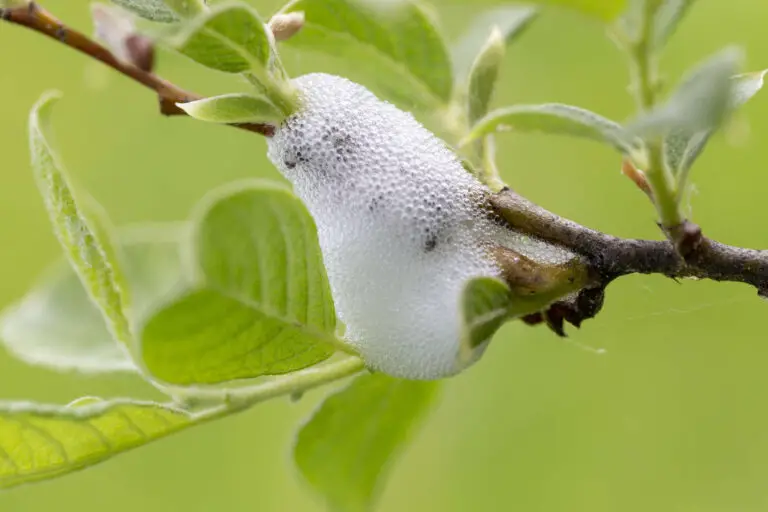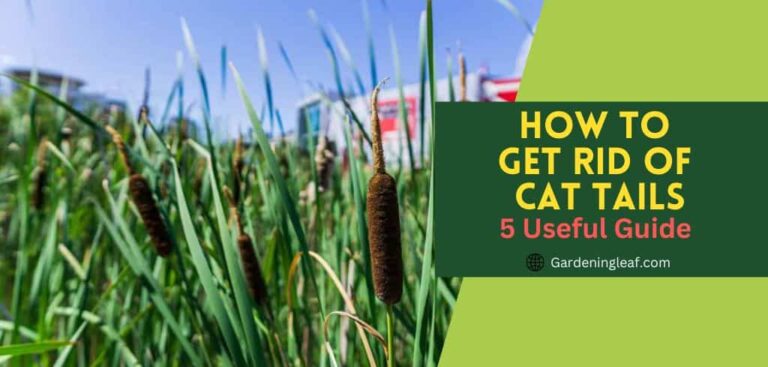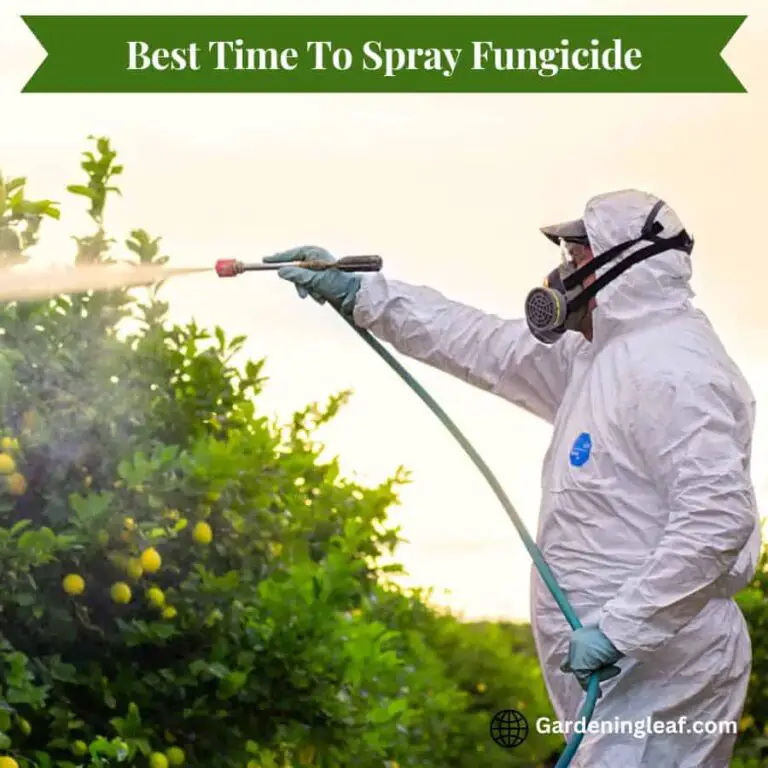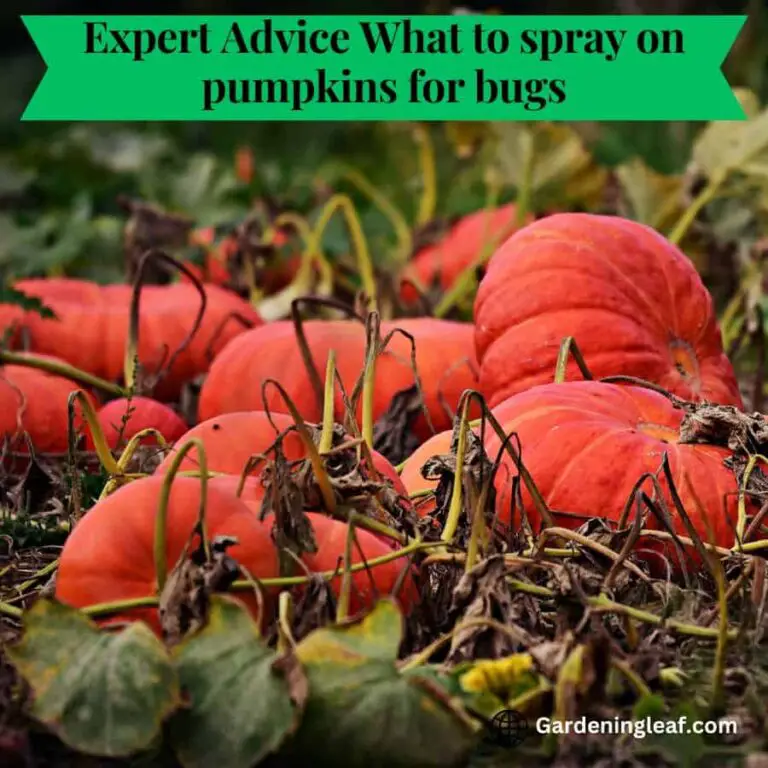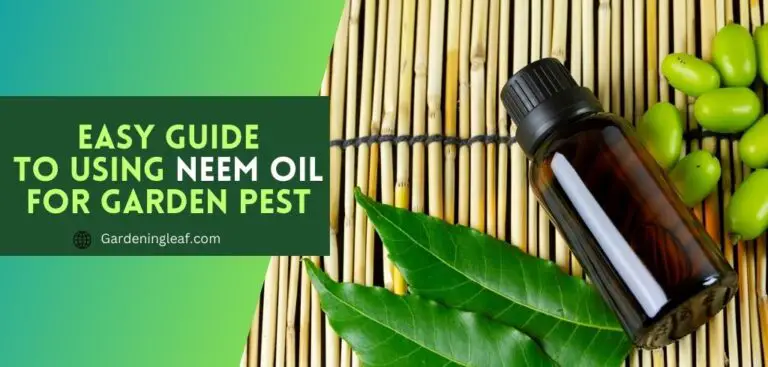How to Get Rid of Spider Mites During Flowering (The Easy Way)
You’re not alone if you’re experiencing issues with spider mites during your flowering process. These pesky little pests can be a real pain, and they can cause a variety of problems for your plants. Here I will try to show you How to Get Rid of Spider Mites During Flowering the Easy Way without resorting to harsh chemicals. We hope this information will help you eliminate these pests and get your flowering process back on track!
What are Spider Mites
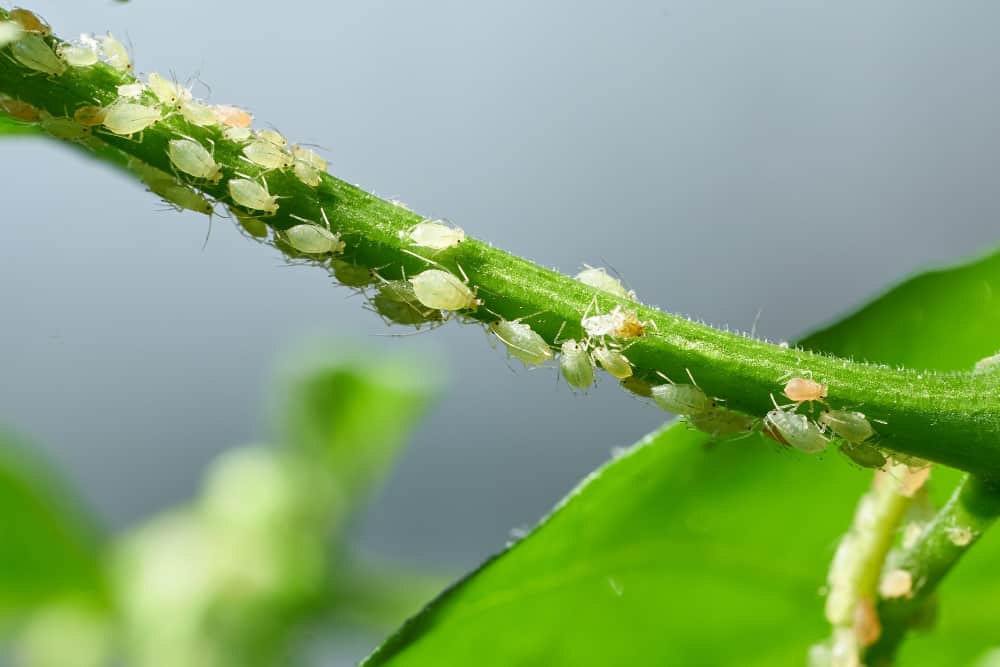
Spider mites are small arachnids that cause problems for plants. They can be found all over a plant’s foliage, including flowers and stems that feed on plant tissue, causing damage and destruction to plants in a matter of days. At their worst, spider mite infestations may appear with webbing or reddish-colored discoloration (wooly), referred to as red stele disease by scientists due to its resemblance to spider webs.
When the flowering plants in your garden reach their peak of growth, the spider mites become active and infest the plants. With the naked eye, these spider mites are difficult to see, and the eggs are much more difficult. Spider mites can cause leaves to curl and turn yellow, flowers to drop off, and the plant may show stunted growth. Spider mite reproduction occurs in the form of tiny, spider-like creatures called nymphs. Nymphs hatch from eggs and grow quickly as they feed on plant tissues. They cause various issues and interfere with the plant’s flowering and growth process; in the worst cases, they may also cause the plant to die slowly but steadily as the mites feed on the plant’s nutrition.
How to Get Rid of Spider Mites During Flowering
1. Use a Natural Spider Mite Control Method Called “Hand-Picking

When spider mites are present in large numbers, you may need to manually prune affected plants and pick them up; using a natural spider mite control method called “hand-picking.” Without resorting to chemical pesticides, this is a highly successful and simple method of removing spider mites.
First, you will need to identify the spider mites on your plants. You can do this by either looking at the infested leaves or flowers directly or by sampling a leaf from an area that is not infested and then comparing it to an infested leaf.
Once you have identified the spider mites, you will need to collect them using a Tweezer or similar tool you can also remove them by hand using a stiff pair of tweezers. Be sure to collect all of the spider mite eggs and larvae! Once you have collected all the spider mites, place them in a glass jar with some rubbing alcohol ( 70-95% is fine) and seal the jar. Leave the spider mite collection jar in a cool, dry place for several weeks or until the spider mites have died.
After the spider mites have died, you can dispose of them by throwing them away or burning them. Follow all local safety guidelines when disposing of spider-mite-infested materials, avoid contact with skin and eyes, and wear protective gloves and clothing if necessary. You can also make a facemask out of sticky tape or petroleum jelly before removing them manually. One of the greatest ways how to get rid of spider mites during flowering.
2. Use an Insecticidal Soap:
Insecticidal soap is another chemical-free means of controlling spider mite infestations. Mix one ounce of insecticidal soap per gallon of water. Apply the diluted soap using a sprayer, applying light pressure and keeping the area around infested plants wet. Repeat treatment as needed until spider mites are no longer detected on the plant foliage.
At home, you may make insecticidal. Simply dilute soap in water to create the soap combination. Just make sure you’re using soap rather than detergent. You should only use real soap in your insecticidal soap mixture because detergents are bad for plants.
3. Use Neem oil :
If you are thinking about getting rid of spider mites during flowering naturally, then using neem oil is the best and cheapest option for you. Neem oil is an organic pesticide. Neem oil is made from the tree’s seed, leaves, and flowering branches. When applied topically to plants, neem oil controls various insect pests and diseases, including spider mites. Just mix one ounce of neem oil per gallon of water or sprayer mist, apply it as needed, and then rinse off plant foliage with water afterwards.
To use neem oil, spray the oil directly on infested leaves. Keep the plants wet while spraying with neem oil, and repeat the treatment until spider mites are no longer detected on the plant foliage.
Neem oil is non-toxic to your plants and pets, but keep in mind that neem oil is a powerful pesticide. Use it only on spider mite-infested plants, and be cautious when applying the essential oil.
You can make your neem oil at home using a recipe found online or in an organic gardening book. Simply mix 1 tablespoon of pure neem seed extract (available online or from some garden stores) per quart.
4. Use a Predator:
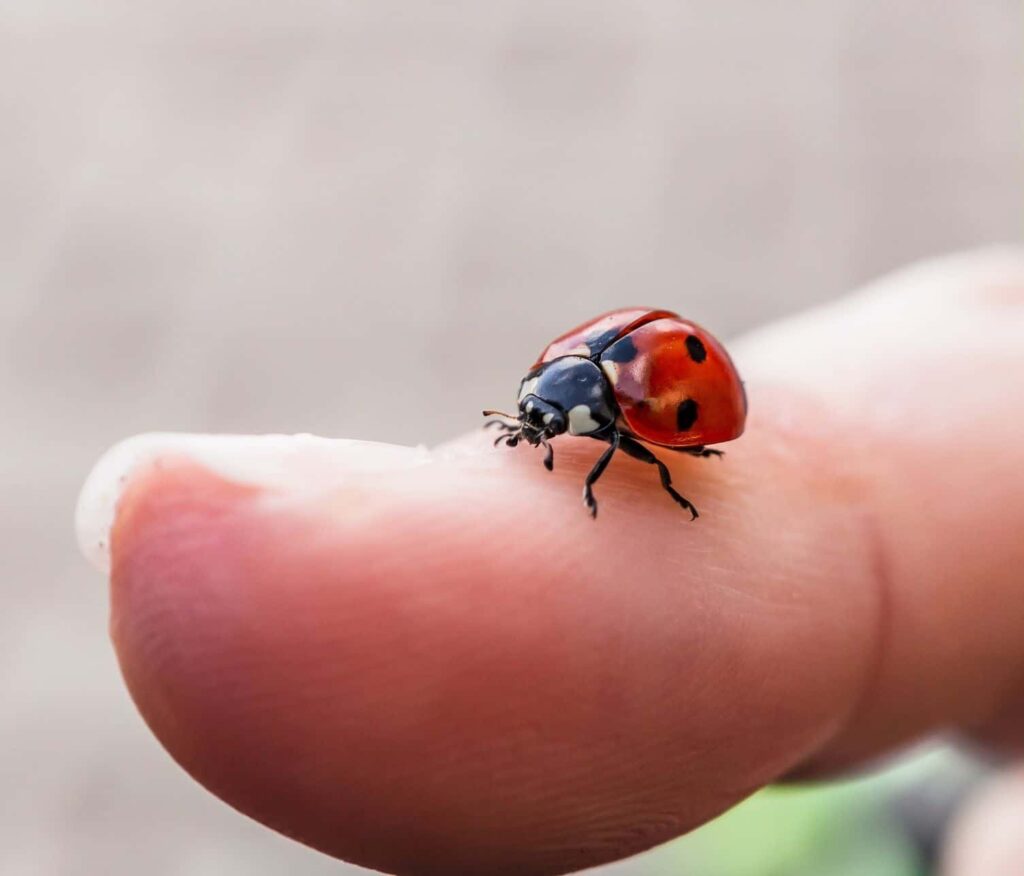
Another good method to eliminate spider mites is to use predatory. These are bugs and thrips that eat others. Although not 100% effective, predatory insects can help control spider mite populations on plants.
One option for using predators is to release ladybugs onto the plant. Ladybugs infest Spider mites, and when they lay eggs, the larvae consume Spider Mite eggs and larvae! If you have a local garden centre or bug company that sells ladybugs by the thousands, this would be a great option for you Another option is to use the predatory mite, Phytoseiulus persimilis. This mite infests spider mites and helps to control them in plants. To use this pest, spray the plant leaves with a foliar application of Pseiulus pesticide.
One of spider mites’ most effective natural predators is the predatory mite. Predatory mites are tiny, reddish-brown creatures that feed on spider mites and other small pests. . Simply release the predatory mite into a pest-infested area, such as around flowering plants.
5. Use an Alcohol Solution Wash:
Another option for getting rid of spider mites is to use an alcohol solution wash. Make a strong alcoholic solution (50% is good) and spray the plant leaves thoroughly with the diluted alcohol. Dilute the 50% ethanol if necessary so it doesn’t sting plants. Leave the pesticide on for several hours, then rinse off any residue. This is a good option if you don’t have access to predatory mites or want to use less pesticide.
Isopropyl alcohol and water can be used together to clean sprayers and other equipment. Isopropyl alcohol is a strong rubbing agent which removes oils and other contaminants from surfaces. Be careful not to get it onto the plant – it may damage the leaves or flowers. To use this solution, mix 1 part isopropyl alcohol with 9 parts water in a garden sprayer.
6. Use Chemical Pesticides :
If you try some natural ways, but they don’t work, you can use Chemical Pesticides. Look for products labeled as spider mite control. These pesticides will kill spider mites and their eggs on the plant. Follow instructions carefully, and use proper caution when handling these chemicals. Always wear gloves, eye protection, and a long-sleeved shirt when applying them to plants.
7. Use Horticultural Oils
Horticultural oils are another option to consider. These products are oil-based and kill spider mites by suffocating them. Apply the oil to infested leaves, spraying until a thick coat is achieved. Ensure plants are well-watered afterwards, as the oil may cause damage if applied too heavily.

These oils are available at garden centres and hardware stores, and they work by suffocating the mites. Spray the plants thoroughly with a spray bottle containing a few drops of oil. Repeat as often as necessary until the problem is solved. Be careful not over apply – you don’t want your plants saturated with the oil.
8. Washing out
If all the above-mentioned methods do not work, you could try hosing the plant off with a gentle showerhead and ordinary water to flush the mites. Remember that they won’t die from this and might even disperse. The eggs, often firmly attached, will not move under this water shower. You may try this approach twice or thrice. Neem oil can be applied after that.
Diatomaceous earth is a sedimentary rock that consists of fossilized diatoms. Many organic gardeners and farmers use it as an alternative to pesticides because it has no chemical residue or toxicity. Diatomaceous earth (DE) will not harm humans, animals, birds, or plants when sprayed on food crops since diatomaceous earth doesn’t contain any fine particles; however, it can be ingested accidentally if inhaled while cleaning or handling the product during application processes.
You can think about covering the ground, pots, and the edges of the growing area with diatomaceous earth. The pests that attempt to cross it die.
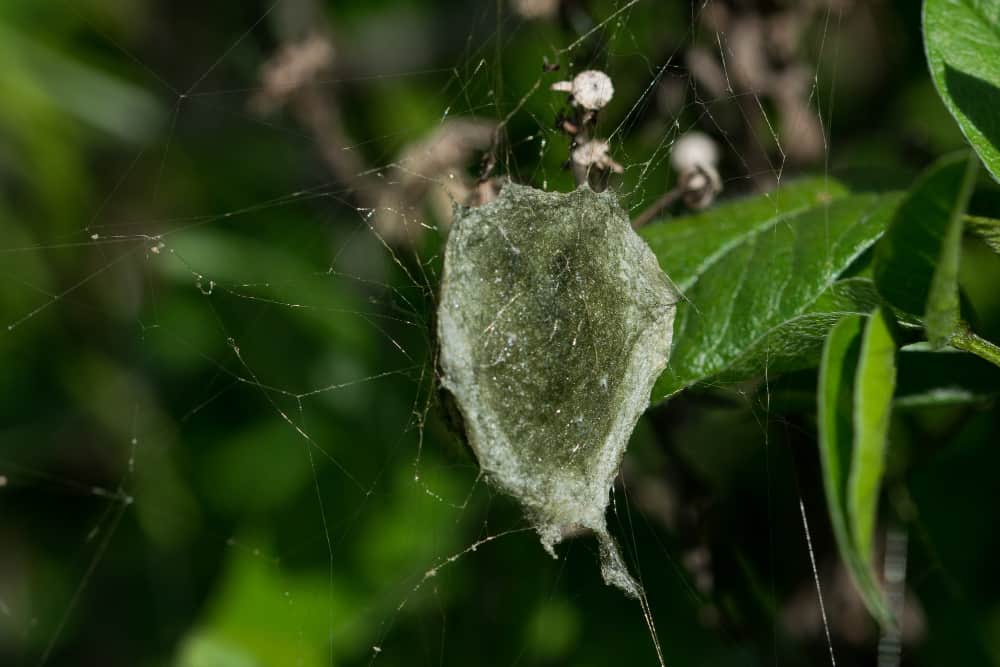
How to Prevent Spider Mites on Plants Naturally
1) Properly water plants
A dry plant is more likely to attract spider mites, so water your cannabis plants well. Not only will this help keep them hydrated, but it will also promote good root growth and help reduce the chances of spider mite infestations. When watering cannabis plants, try to give them plenty of room to pour rainwater without standing in it. Too much water can lead to soft plants and an easier time for spider mites to infest them.
2) Fertilize well
A deficiency in plant nutrients may contribute to spider mite infestation. Make sure you fertilize your cannabis plants regularly with high-quality compost, fertilizer, or liquid plant food like neem oil or fish emulsion. These products contain elements that help the plants grow strong and resist pests and diseases.
3) Keep down pest numbers
One of the best ways to keep spider mites under control is by eliminating sources of pest populations. This includes destroying infested plants, removing leaves and other plant debris that may harbour spider mites, and using natural insecticides or chemical miticides only as a last resort.
4) Use pesticides sparingly
When using pesticides, it is essential to read the label carefully and use them only as directed. Overusing pesticides harms your plants and increases the risk of spider mite infestation.
5) Check plants for infestation
Once you have determined that spider mites are the problem, the next step is to check the entire plant for signs of infestation. Look for webbing (the fine-spun webs spiders use to capture food), eggs, and larvae near the base of leaves or stalks. If you locate one of these creatures, take quick action to get rid of it.
6) Destroy infested plants
Once you have determined that spider mites are the problem, the best action is to destroy all infested plants. This may mean removing infected leaves and stalks with a hoe or rake, spraying them with insecticides, or using a flame to incinerate the plant completely.
7) Educate others about spider mites –
One of the best ways to help control spider mite populations is by educating other growers. Share this article, tell your friends and family about spider mite infestation, and urge them to prevent it in their gardens as well. Spider mites are small arachnids that live on the surface of plants. They are very common in gardens and can cause major damage to flowering plants.
Spider mite infestation is usually caused by one of two things: dry air or insufficient light. If you have a large infestation, it may also be due to a build-up of organic matter (from leaves or plant roots) near the plant’s base, which attracts spider mites.
FAQs
How do you spot spider mites?
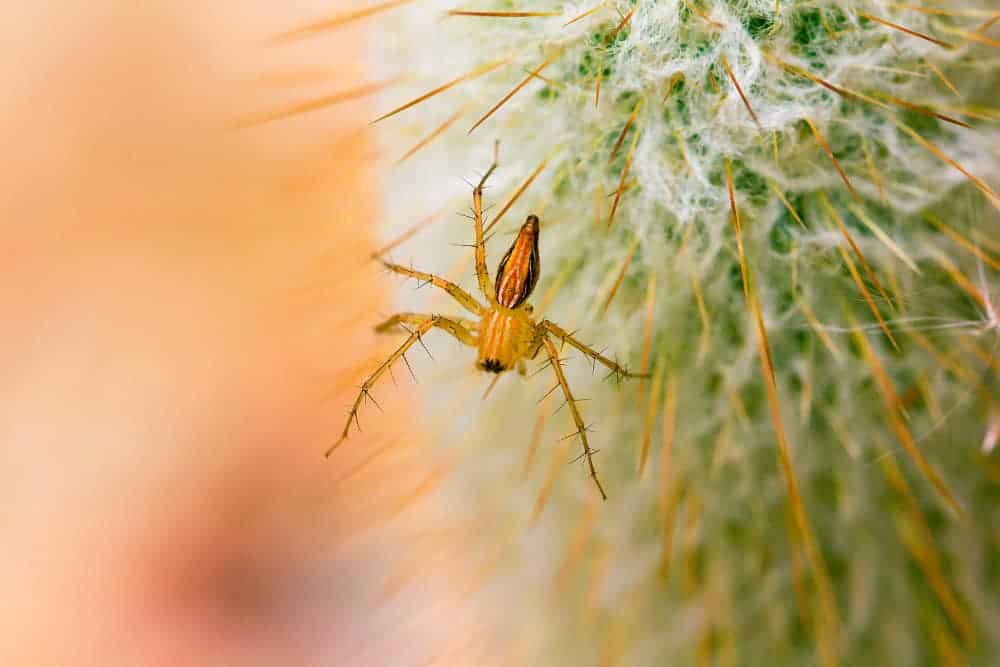
If you’re experiencing problems with your plants or flowers, one of the most likely suspects is spider mites . They are tiny creatures that feed on plant material and can cause serious damage if not treated quickly.
Spider mite activity may be spotted by looking for little yellow or brown spots on the plant’s leaves. Additionally, check leaves for small red spots that may become enlarged and discoloured with exposure to sunlight. If there are signs of severe infestation, trim off all affected foliage immediately to prevent further damage.
Once you have identified the spider’s mating problem, treatments include using an organic spray such as insecticidal soap or horticultural oil to kill the spiders and their eggs and larva. You can also use abrasion equipment such as a hand rake or wire brush to reduce population levels; however, wear protective clothing when doing so!
What Does Spider Mite Infestation Look Like?
Spider mites primarily feed on the sap from plants’ roots and stems, which causes damage that may lead to yellowing or browning of the leaves, distortion or curl of the flower petals, shedding of new growth at branch tips (a sign that nutrient uptake is being impaired), stunted development in young fruits or vegetables due to lack of chlorophyll production (which helps photosynthesis take place), as well as weight loss in older specimens due to reduced foliage density.
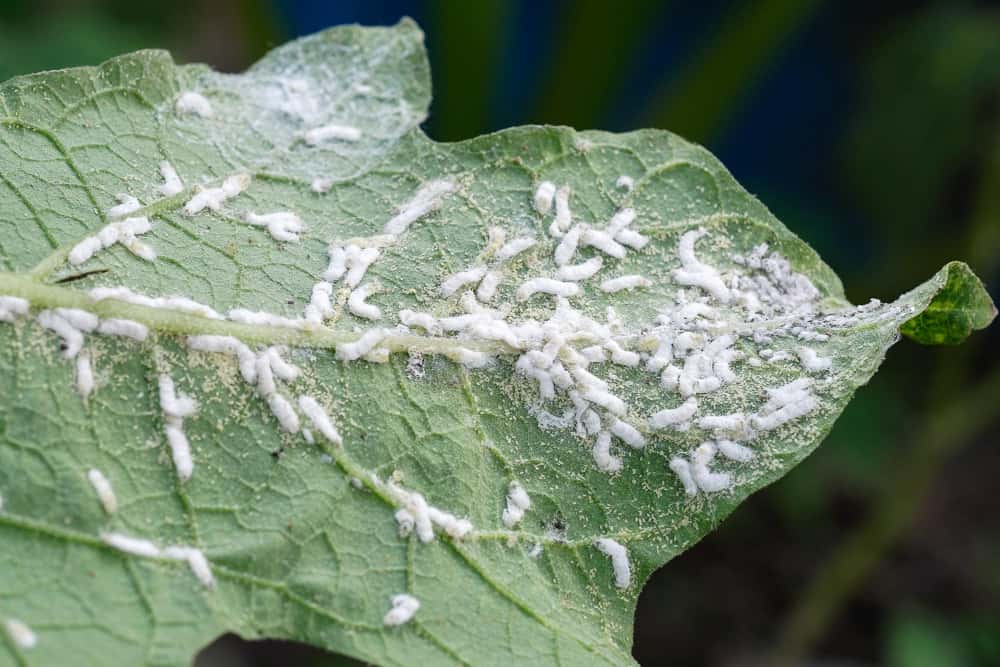
If you notice any excessive defoliation – particularly around nodes where old nourishment was being transferred – then it’s probably time to treat your garden with an insecticide designed for spider mites.
Spider mite populations increase rapidly during warm weather because they multiply quickly in moist environments. Once temperatures start dropping again, spider mites will die off due to the cold environment or lack of food sources. This naturally encourages plant growth since decomposing organic material is essential for an ethical microbial community.
Can I spray insecticide during flowering?
While it may not be the best strategy, spraying insecticide during flowering can sometimes be necessary to control pesky insects. Make sure you read all the directions carefully before applying any pesticide, and always use caution when handling delicate plants. Use any approved product to do the trick if your plant is infested with a particular type of insect.
Where do spider mites place their eggs?
The eggs of spider mites are found on the underside of the leaves. Baby spider mites feed on plant sap once they have been hatched and develop quickly.
As they mature, they build webs and consume more plant nutrients. Eventually, they leave the host plant and look for a new place to live.
Conclusion
Hopefully, now you know how to Get Rid of Spider Mites During Flowering and what natural remedies you can use.
To prevent their return, ensure you regularly inspect your plants and remove any infested buds before the flowering stage is over. You’ll also need a good gardening soap such as Advanced Biological Insecticide (ABC) or Neem Oil Spray – do not use it on edible plants! And don’t forget; if an outbreak becomes too severe, contact a professional for assistance.
To sum up, it’s time to eliminate the bad mites and start treating your plants. Simply follow these treatments, and you’ll see results within no time! Spider mites can be avoided in your flowering stages with a little work. All it takes is some care and attention toward your plants, especially during their reproductive processes.
References:
https://www.gardeningknowhow.com/plant-problems/pests/insects/spider-mite-control.htm
https://www.gardeningknowhow.com/plant-problems/pests/insects/spider-mite-treatment.htm




